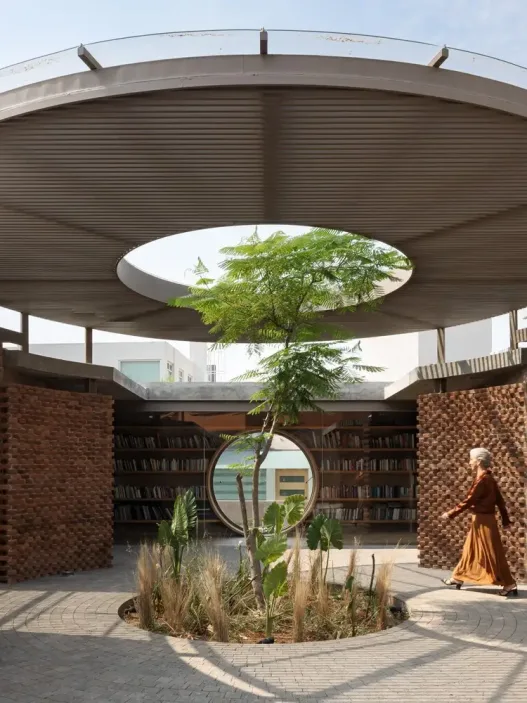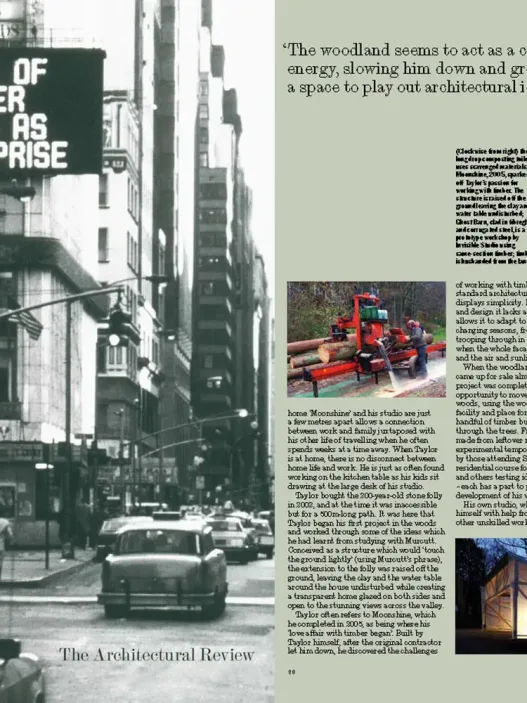The journey of an architect is both exciting and daunting, filled with creativity, technical competence and a deep understanding of space and function. After an intensive training period, architect candidates step into a world that is both challenging and rewarding. The transition from academia to professional life is a critical period that shapes not only their careers but also their personal identities. As they navigate the complexities of the industry, they encounter struggles, successes and compromises that must be made along the way. This process becomes the defining elements of their architectural journey.

Transition from Student to Professional
For many architects, graduation is a moment of excitement and uncertainty. The knowledge acquired in classrooms and studios must now be applied in real world conditions. This transition is more than just a change of environment; it represents a change in mindset. Accustomed to the support of professors and the collaborative nature of school projects, students must now take on responsibilities that require independence and critical thinking.
In this new environment, architects are often pushed into fast-paced environments where deadlines are looming and clients have high expectations. The ability to adapt quickly becomes essential. New architects learn to balance their creative vision with practical constraints such as budget and timeline. This transformation can be overwhelming, but it also offers a chance for growth and innovation, encouraging flexibility and adaptability.
First Challenges for New Architects
New architects face various challenges when they enter this field. One of the most significant barriers is the steep learning curve associated with professional practice. While academic training is largely focussed on design theory and technical skills, the realities of working in an architectural firm require competence in project management, client relations and regulatory compliance.
In addition, many new architects face the pressure of financial stability. Entry-level positions often come with modest salaries, which can be discouraging after years of investing in training. The competitive nature of the industry means that job security can be elusive. As they grapple with these initial challenges, new architects must develop a sense of perseverance and realise that every setback is an opportunity for learning and growth.
The Importance of Networking
Relationships are extremely important in architecture. Networking plays a crucial role in shaping an architect’s career. Making connections with industry professionals can lead to mentoring opportunities, business referrals and joint projects. New architects are encouraged to network with colleagues, attend industry events and get involved in professional organisations.
These interactions not only provide insight into the inner workings of the industry, but also help to build a personal brand. A strong network can open doors to projects and clients that would otherwise be inaccessible. Also, sharing experiences with fellow architects fosters a sense of community, reminding newcomers that they are not alone in their struggles and triumphs.
Understanding Industry Expectations
When architects step into their professional role, they must quickly grasp the expectations that the region brings with it. Clients are often looking for innovative solutions that are functional and cost-effective. Understanding client needs is crucial, as is the ability to communicate ideas clearly. New architects must learn to balance their creative aspirations with the practicalities of the projects they undertake.
They must also overcome the complexities of co-operation within multi-disciplinary teams. Architects often work with engineers, interior designers and landscape architects, each bringing their own expertise and perspectives. The ability to listen, compromise and integrate different points of view is crucial for the successful delivery of a project.
Identifying Career Goals and Aspirations
With the basic experience gained in the early years of the profession, architects begin to define their career goals. Some may aspire to specialise in a particular field, such as sustainable design, urban planning or historic preservation. Others may dream of starting their own firms or taking on leadership roles in established companies.
Setting these goals requires introspection and an understanding of personal values and passions. Architects should evaluate which aspects of their work bring them joy and fulfilment. Whether it is creating innovative spaces, contributing to social development or pushing the boundaries of design, having clear goals guides their professional journey. As their experience grows, the choices they make will shape the trajectory of their careers and lead to a fulfilling and effective life in architecture.
As a result, the lives of architects after graduation are filled with a rich tapestry of experience. From the initial transition into the professional field to the challenges of networking and understanding industry expectations, each step is part of a larger journey. By setting clear goals and embracing the complexity of their craft, architects can overcome struggles and celebrate the successes that define their unique path.
Becoming an architect is a dream for many, but the journey does not end with graduation. In fact, it often marks the beginning of a new chapter full of challenges and triumphs. The transition from student to professional is complex and multifaceted, presenting numerous obstacles along the way. This research explores the challenges architects face early in their careers and sheds light on the realities they must overcome.
Early Career Challenges
For architects, the first stage of a career is often marked by a mixture of excitement and anxiety. New graduates step into a world that requires not only creativity but also endurance. The road ahead can be rocky, full of obstacles that test their determination and passion for the field.
Navigating Labour Market Realities
One of the first challenges architects face is the labour market. Graduates can find themselves in a highly competitive environment where positions are limited and expectations are high. Many firms are looking for experienced candidates, which can be frustrating for new architects looking to start their careers. Networking becomes crucial as you attend industry events, reach out to alumni and use social media to connect with potential employers. Every interaction can lead to opportunities, but the process can be overwhelming and discouraging at times.
Dealing with Financial Pressures
For many new architects, the financial pressures are great. Student loans can be daunting, and starting salaries in architecture often do not reflect years of hard work and investment in education. Many graduates find themselves in entry-level positions that do not provide enough income to cover living expenses and loan repayments. This financial strain can lead to a sense of instability, prompting some to take on additional work or freelance projects. The struggle to balance their finances while staying true to their passion for architecture is a common narrative in the early years of their careers.
Managing Work-Life Balance
When architects begin their professional journey, the demands of the job can blur the lines between work and private life. Long working hours are often the norm on projects that require intense focus and dedication. New architects may find themselves working late nights and weekends, feeling pressure to impress their employers and meet tight deadlines. This imbalance, if not carefully managed, can lead to burnout and damage their health. Learning to set boundaries and prioritise self-care becomes crucial when navigating this challenging environment.
Overcoming Impostor Syndrome
Imposter syndrome is a common problem among new architects. Even with a solid education, many graduates struggle with feelings of inadequacy and self-doubt. They may question their abilities, fearing that they do not belong in the world of professional architecture. This mindset can be debilitating, affecting their confidence in taking on new projects or speaking in meetings. Over time, many people find that sharing their feelings with peers and mentors helps to normalise these experiences and allows them to build resilience and embrace their unique perspective.
Finding Mentoring and Guidance
Mentoring plays a crucial role in the development of young architects. Finding a mentor who can provide guidance, support and constructive feedback can make a significant difference to a new architect’s career. Many graduates seek experienced professionals who can offer insight into the complexities of the industry. A good mentor not only shares knowledge, but also encourages growth and fosters a sense of belonging. Building these relationships can lead to invaluable learning experiences and open doors to new opportunities.
In conclusion, the early years of an architect’s career are full of both challenges and learning opportunities. New architects can pave their way to success by navigating the challenges of the job market, managing financial pressures, balancing work and life, overcoming self-doubt and seeking mentorship. Each challenge they face contributes to their growth, moulding them into the innovative professionals the field of architecture needs. The journey can be challenging, but it is also rich in potential and promise, laying the groundwork for a fulfilling and impactful career.
An architect’s journey begins long before they don their hard hat and step onto a construction site. Graduating from architecture school is only the first milestone in a profession that blends creativity with technical expertise. After graduation, architects face countless challenges, triumphs and sometimes daunting compromises. This research explores the nuanced lives of architects, highlighting their achievements, struggles and the multifaceted nature of their careers.
Architects’ Success Stories
Success in architecture often comes with stories of resilience and innovation. Many architects embark on paths to notable achievements, showcasing their talents in a variety of arenas. These narratives are not just about recognition; they reflect a determination to push boundaries and create spaces that resonate with society.
Notable Achievements in Design Competitions
Design competitions often act as a launch pad for architects, offering them the chance to showcase their creativity and vision. Winning a prestigious competition can catapult a young architect into the spotlight and provide invaluable exposure and opportunities. The Pritzker Architecture Prize, for example, has recognised numerous architects who began their journey by winning smaller, local competitions. These awards not only recognise architects’ skills, but also help them build a reputation in a competitive field. Successful competition submissions often address pressing societal issues such as sustainability and urbanisation and highlight how architects can impact the world around them through innovative design.
Innovative Projects and Their Impact
The architectural landscape is rich with projects that redefine our understanding of space and function. Architects are increasingly tasked with creating buildings that are not only aesthetically pleasing but also environmentally sensitive. Projects such as Bosco Verticale in Milan, which integrates nature into urban life, show how innovative design can address ecological concerns while improving the quality of life for urban residents. Such projects often inspire others by setting new standards for what is possible in architecture. The impact of these innovations goes beyond physical structures; they encourage community engagement and contribute to a more sustainable future.
Personal Branding
In today’s digital age, personal branding is crucial for architects. A strong personal brand helps architects communicate their unique vision and philosophy to the world. Many architects use social media platforms and personal websites to showcase their projects and share insights into their design process. This visibility can attract clients and collaborators who align with their aesthetic and values. Building a brand is not just about self-promotion; it is a way for architects to connect with like-minded individuals and communities, developing a sense of belonging and common purpose in the architectural narrative.
Expanding Professional Networks
Networking plays a vital role in the post-graduate life of architects. Building relationships with other professionals in the field can open doors to collaborations, mentorships and job opportunities. Architects often attend industry conferences, workshops and local meet-ups to connect with peers and industry leaders. These interactions can lead to fruitful partnerships where ideas are exchanged and projects are born. In addition, professional organisations such as the American Institute of Architects (AIA) provide platforms for architects to communicate with each other, share information and advocate for the profession together.
Contributions to Society and Community
Architects are not just designers of buildings; they are an integral part of the cultural fabric of society. Many architects dedicate their skills to community projects, focusing on improving living conditions and creating spaces that encourage social interaction. Initiatives such as affordable housing projects or community centres reflect a commitment to giving back and meeting societal needs. These contributions emphasise the profound impact architects can have on their communities as they strive to create inclusive and accessible spaces for all. Through their work, architects shape not only the physical environment but also the social dynamics within communities, making their role both influential and important.
As a result, architects’ lives after graduation are a tapestry of success stories, innovative projects and meaningful contributions to society. While this path is full of challenges and compromises, the rewards, both personal and professional, are immense. Architects constantly evolve, adapting to new trends and technologies, while remaining true to their mission of improving the built environment. Their journey is a testament to the power of creativity, resilience and a commitment to making a difference in the world.
Becoming an architect is often seen as a glamorous and prestigious career, full of creativity and innovation. However, the journey after graduation can be a complex web of struggles, achievements and compromises. Architects must overcome various challenges that test their skills, patience and passion for their craft. This research sheds light on the multifaceted lives of architects who transition from academic life to the professional world.
Compromises in Architectural Practice
In the field of architecture, compromises are an inevitable part of the process. Architects often find themselves balancing their creative vision with the practical demands of clients, budget constraints and legal requirements. As they begin their professional journey, they quickly learn that the ideal design may need to be adjusted to meet various external expectations. This delicate dance shapes not only the projects they undertake but also their identity as architects.
Balancing Creativity and Client Demands
One of the most important challenges architects face is finding the right balance between their creative aspirations and the desires of their clients. Every project begins with a spark of inspiration, a vision that architects are eager to realise. However, clients often have their own expectations, influenced by their personal tastes, cultural context and practical needs.
For example, an architect may envision a bold, avant-garde building, but the client may prefer something more traditional and commercially viable. This bickering can be frustrating; architects must learn to listen effectively, negotiate and sometimes adjust their artistic vision. Successful architects often find a middle ground, crafting designs that resonate with their original ideas while meeting the client’s requirements. This balancing act not only encourages co-operation but also enhances the end result, resulting in both innovative and functional spaces.
Budget Constraints and Project Limitations
Budget constraints are another important factor that architects must overcome. Every project comes with a financial framework that dictates what can be achieved. Architects must be adept at working within these limits, finding creative solutions that maximise value without compromising quality.
For example, a project may initially involve high-end materials and the latest technologies, but as financial realities emerge, architects may need to suggest alternatives that are more cost-effective yet retain aesthetic appeal. This may include selecting sustainable materials that offer durability and style without breaking the bank. The ability to re-imagine a design within a budget is a skill that distinguishes successful architects and reinforces their role as problem solvers in the built environment.
Dealing with Regulatory Challenges
Overcoming regulatory challenges is another important aspect of an architect’s job. Every project must comply with numerous local building codes, zoning laws and safety regulations. These rules, while necessary for public safety and community welfare, can sometimes feel restrictive for architects who are keen to push the boundaries.
Architects often spend considerable time researching and understanding these regulations to ensure that their designs comply with legal standards. This process can lead to compromises in design and functionality. For example, a striking glass façade may need to be modified to meet energy efficiency standards. The ability to creatively interpret and work within these regulations is vital as it allows architects to achieve their vision while ensuring harmony and safety.
Time Management and Project Deadlines
Time management is another critical challenge architects face. Every project comes with deadlines that must be met, often leading to long hours and intense pressure. Coordinating the various stages of design, client meetings and construction schedules requires meticulous planning and organisation.
Architects need to be adept at prioritising tasks and managing their time effectively to keep projects on track. This can be particularly challenging when unexpected issues arise, such as delays in material delivery or changes in client preferences. The ability to adapt and remain flexible while maintaining focus on the project timeline is essential for success in this fast-paced industry.
Maintaining Quality of Work Under Pressure
Finally, maintaining the quality of work under pressure is a testament to an architect’s commitment to their craft. While meeting deadlines and sticking to budgets, architects must also ensure that their work reflects their high standards. The stress of juggling multiple projects can sometimes lead to corners being cut or details being overlooked. But the best architects know that quality should never be compromised.
They develop strategies to manage stress and maintain creativity, such as setting realistic expectations and receiving feedback throughout the design process. Creating a supportive working environment where collaboration and open communication flourish can also help to alleviate pressure and improve the overall quality of work produced.
Ultimately, architects’ lives after graduation are determined by a series of compromises that shape their professional journey. Balancing creativity with client demands, overcoming budgetary constraints, dealing with regulatory challenges, managing time effectively and maintaining quality under pressure are all integral to their role. Despite these challenges, many architects are satisfied with their ability to realise their vision and contribute to the built environment in meaningful ways.
An architect’s journey does not end with graduation; rather, it marks the beginning of a lifelong adventure filled with challenges, triumphs, and necessary adjustments. As society evolves and the built environment changes, architects must adapt to new demands and opportunities. This research explores the multifaceted world of architects after graduation and highlights the important role of continuing education in shaping their careers.
The Role of Continuing Education
Continuing education is vital for architects and serves as a bridge between academic knowledge and real-world practice. After completing their formal education, architects often find themselves in a rapidly changing environment influenced by technological advances, sustainability concerns and changing design philosophies. This ongoing learning process helps them to remain current and effective in their role.
An important aspect of continuing education is the need to understand contemporary trends. Architects must grasp new materials, construction techniques and design innovations to create spaces that meet current standards and client expectations. For example, the rise of smart buildings (structures equipped with advanced technologies) requires architects to be knowledgeable in integrating systems that improve energy efficiency and user experience.
Furthermore, continuing education fosters a culture of lifelong learning, encouraging architects to pursue new skills and knowledge areas, thus enriching their professional portfolio and enhancing their creative abilities.
The Importance of Staying Current with Trends
Being aware of trends is crucial for architects to maintain a competitive edge. The field of architecture is constantly evolving, influenced by factors such as environmental sustainability, urbanisation and technological advances. Architects who are aware of these trends can create innovative designs that resonate with contemporary audiences.
For example, the increased emphasis on sustainable architecture has led many architects to explore environmentally friendly materials and energy-efficient designs. Understanding these trends not only informs their design choices, but also allows them to engage with clients who prioritise sustainability in their projects. By embracing current trends, architects can position themselves as forward-thinking professionals who can address both client needs and societal challenges.
Opportunities for Professional Development
Professional development opportunities for architects after graduation abound. Many organisations, such as the American Institute of Architects (AIA), offer workshops, seminars and conferences that provide valuable information and networking opportunities. These events serve as a platform for architects to learn from industry leaders, share experiences and collaborate on innovative projects.
In addition, online courses and webinars have made professional development more accessible. Architects can choose from a wide range of subjects, ranging from advanced design software to project management skills. This flexibility allows students to tailor their learning experience to their own career goals and interests, ensuring they remain relevant in a competitive market.
Specialisations and Certificates
Specialisations and certifications play an important role in an architect’s career path. As the field becomes more specialised, architects often choose to focus on areas such as landscape architecture, urban design or historic preservation. Pursuing these specialisations not only enhances their expertise, but also opens the door to new opportunities in niche markets.
Certifications such as LEED accreditation for sustainable design can further strengthen an architect’s credentials. These recognitions signal to clients and employers that an architect has a deeper understanding in certain areas, making them more attractive candidates for projects requiring specialised knowledge.
Networking through Education Platforms
Networking is another critical aspect of continuing education for architects. Whether face-to-face or online, educational platforms provide opportunities for architects to connect with colleagues, mentors and industry leaders. Making these connections can lead to joint projects, business opportunities and valuable insights into the evolving architectural landscape.
Joining professional organisations and attending industry events allows architects to share experiences and learn from others. These interactions can foster a sense of community, providing support and encouragement through the ups and downs of an architectural career.
The Impact of Technology on Learning
Technology has dramatically changed the way architects approach learning. Digital tools and online resources have made it easier for architects to access information and develop new skills. From virtual reality simulations that enable immersive design experiences to online forums where architects can discuss challenges and solutions, technology is improving both education and collaboration.
Moreover, the integration of technology into design processes has led to the emergence of new methodologies such as parametric design and Building Information Modelling (BIM). Architects who adopt these technologies not only improve their design capabilities, but also streamline project workflows and improve communication with clients and stakeholders.
As a result, architects’ lives after graduation are characterised by continuous learning and adaptation. The role of continuing education is crucial to ensure that they remain knowledgeable, skilful and connected in the ever-evolving architectural environment. As architects navigate the complexities of their careers, their commitment to professional development ultimately shapes the built environment and influences the world around them.
Becoming an architect is a dream for many, but the journey does not end with graduation. In fact, it often marks the beginning of a new chapter full of unique challenges and opportunities. Architects must navigate a landscape shaped by emerging trends, sustainability concerns, technological advances and urban development needs. Understanding architects’ lives after graduation reveals the complexities they face and the compromises they make in pursuit of their vision.
Looking to the Future for Architects
For architects, the future is a dynamic tapestry woven from various threads of change. As society evolves, so does the practice of architecture. Today, architects are not only creators of buildings; they are integrators of culture, technology and sustainability. Their perspective is not only about aesthetic design, but also about how buildings can enhance human experiences and fulfil societal needs. This multifaceted role requires architects to be knowledgeable about trends and innovations that can shape their contribution to the built environment.
Emerging Trends in Architecture
Architecture is in constant flux, responding to changing cultural values and societal needs. An important trend is the increasing emphasis on mixed-use developments that combine residential, commercial and recreational space. This approach encourages community interaction and aligns with contemporary desires for walkable neighbourhoods by reducing the need for transport. Another emerging trend is the focus on biophilic design, which aims to connect people to nature through the incorporation of natural elements into built environments. Architects are exploring how light, greenery and natural materials can enhance wellbeing, making spaces more vibrant and inviting.
Furthermore, the rise of remote working has influenced architectural design, leading to the creation of flexible spaces that accommodate both personal and professional activities. This has changed the way residential architecture is designed, creating new possibilities for designing homes that appeal to different lifestyles.
The Impact of Sustainability
Sustainability has emerged as a cornerstone of modern architecture, driven by the urgent need to combat climate change and reduce environmental impacts. Architects are increasingly tasked with designing buildings that are not only efficient but also restorative. This means considering the entire life cycle of a building, from material selection to energy consumption and waste management.
Green building certifications such as LEED (Leadership in Energy and Environmental Design) have become the benchmark for sustainable design. Architects are innovating with renewable, recycled or lower carbon footprint materials. It is also increasingly common to integrate renewable energy sources such as solar panels and wind turbines into designs. The pursuit of sustainability is not just a trend; it is a necessity that architects must embrace to ensure a better future for the planet.
Adapting to Technological Developments
Technology is reshaping the field of architecture in profound ways. From advanced software for design and visualisation to the use of Building Information Modelling (BIM), architects are using technology to enhance their creative process. These tools enable precise modelling and collaboration, enabling architects to visualise projects in 3D before construction begins.
In addition, emerging technologies such as virtual reality (VR) and augmented reality (AR) offer architects new ways to communicate their ideas to clients and stakeholders. These technologies provide a better understanding of spatial experiences and design concepts, making it easier to communicate complex ideas. As architects adapt to these developments, they not only develop their business, but also ensure that they remain competitive in a rapidly changing industry.
Future Career Paths and Opportunities
Career paths for architects are increasingly diversifying to reflect the evolving nature of the profession. Beyond their traditional roles in residential or commercial design, architects are finding opportunities in technology-orientated fields such as urban planning, landscape architecture and even smart city development. The rise of interdisciplinary collaboration means that architects often work with urban planners, engineers and environmental scientists to create holistic solutions that address multifaceted challenges.
Moreover, as public awareness of social issues grows, architects are increasingly involved in activism and community engagement. They are using their skills to advocate for affordable housing, urban regeneration and equal access to public spaces. This shift towards socially responsible design not only enriches the profession, but also empowers architects to make a meaningful impact on society.
The Role of Architects in Urban Development
Urban development is one of the most important fields for architects, who play an important role in shaping the environments in which people live, work and interact. Architects are tasked with addressing the complexities of urban areas by balancing the needs of different populations while considering environmental sustainability and economic viability.
In this context, architects often engage in community-oriented design practices by involving local stakeholders in the planning process. This participatory approach ensures that developments reflect the needs and aspirations of the community, fostering a sense of ownership and belonging. As cities continue to grow and develop, architects will continue to be at the forefront, creating innovative solutions that enhance urban living while promoting sustainability and inclusivity.
As a result, architects’ lives after graduation are shaped by a mix of challenges and successes. Overcoming challenges such as emerging trends, sustainability demands, technological advances and urban development roles, architects continue to influence the world around them. Their ability to adapt, innovate and engage with communities will be crucial in shaping the future of architecture for generations to come.























